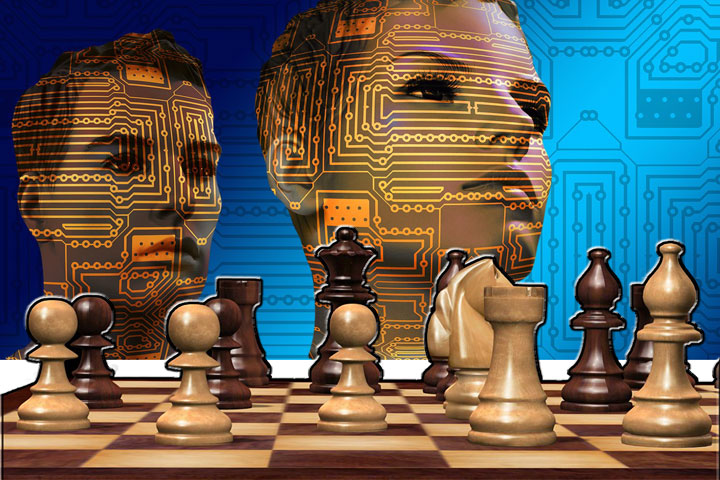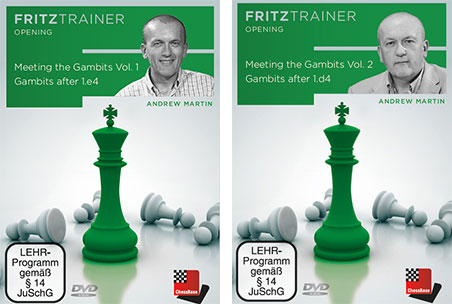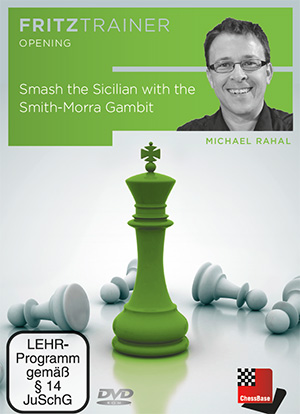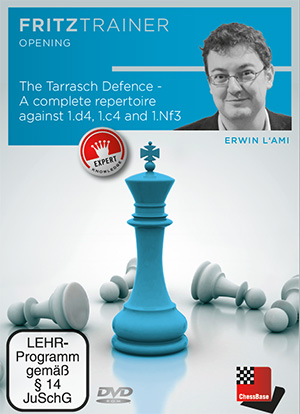


In Chess Tips for the Improving Player (Quality Chess, 2008), I presented an imaginary dialogue:
“I’m in love,” he confessed.
“I’m very happy to hear that,” I said. “Who is she?”
He blushed. Then he shared his secret with me: “It’s Mrs. Fritz” (from Diaries of a Young Chessplayer — yet to be written).
I went on to discuss the complex love-hate relationship between humans and their chess software. They (it?) assist us in analysis and spare us effort in detecting our errors. On the other hand, who likes smart alecks? Comparing ourselves with Fritz, we are bound to become demoralised.
A decade has passed; has anything changed? Presumably young chess addicts treat this computer-thing in a rational way. They usually refer to it positively, regarding it as an ideal training partner and a great teaching tool. They were born into the age of the computer, so frequently one hears a player saying serenely, “My rival just caught me in home preparation; he unleashed a computer move and there was nothing I could do about it.” I gather that older players, who recall other times, are not so tranquil about such matters.
Chess literature has a lot to say about how to use the advantages of chess software: exploiting wisely its various functions, identifying the sort of positions in which one should not rely on the software’s verdict, effective methods of maximising learning with it, and more. Less has been written about the attitude or emotional response of humans towards the silicon chess monsters. Let me share some good and bad moments regarding the relationship between humans and chess software. I assume many readers have had similar experiences.
In 1978, as a young composer, I published the following study in the British Chess Magazine.

[Event "British Chess Magazine"] [Site "?"] [Date "1978.??.??"] [Round "?"] [White "Avni, Amatzia"] [Black "White to play and win"] [Result "1/2-1/2"] [SetUp "1"] [FEN "8/5P2/8/3p4/3Kn3/8/5Pr1/2R2Nbk w - - 0 1"] [PlyCount "11"] [EventDate "2018.??.??"] 1. f8=Q Rxf2 2. Qh6+ $1 (2. Ng3+ Nxg3 3. Qxf2 Nf1 4. Rxf1 {is stalemate.}) ({ The Nalimov six-piece tablebases tell us that} 2. Qc8 {is an alternate win, as} Rf8+ 3. Kxd5 Rxc8 4. Rxc8 {is mate in 85!}) 2... Rh2+ 3. Qe3 $1 {[#] Now Black can choose between} Rh3 ({and} 3... Bxe3+ 4. Nxe3# {due to the selfblock}) 4. Ng3+ Rxg3 5. Rxg1+ Rxg1 6. Qh3# {with the self-block this time occurring on g1. } 1/2-1/2
Despite the passage of time, I still love this brainchild. However, once the Nalimov six-piece tablebases were out, it transpired that 2.Qc8 is an alternative win (see above).
What was I to do? At the time when the study was composed, rook and knight versus knight and bishop was supposed to end in a draw. Excuse me for missing mate in 85 moves, and, of course, you can’t argue with the tablebase. Almost no human will know how to proceed from this position, nor will he understand why a certain move is better and quicker than the other, but, hey, the holy tablebase made its verdict, so who are we to object?
If you detect a tone of resentment in the last paragraph, you would be right. The computer interfered in my own business without being invited, and I didn’t like it one bit. I admit that I reacted in a rather childish way: looked right and left, realised that no one else had spotted the flaw, and kept my mouth shut. It was only some months ago that I finally accepted that I would have to take steps to rescue my creation. Luckily it was not so hard: by transferring the rook on c1 to e1, the solution stays intact and the study regains its soundness.
In 2017 I worked on a study with a fellow composer. I wanted to add an introductory move and had to check if this didn’t ruin the correctness of the work. The critical variation reaches by force the following position:

[Event "Collaboration"] [Site "?"] [Date "2017.??.??"] [Round "?"] [White "Avni, Amatzia"] [Black "White to play"] [Result "*"] [Annotator "Amatzia Avni"] [SetUp "1"] [FEN "Q7/3p1k2/2Np3P/3q1Pb1/8/K2P4/2p5/8 w - - 0 1"] [PlyCount "14"] [EventDate "2018.??.??"] 1. Nd8+ Ke7 2. Qxd5 c1=Q+ 3. Ka4 Kxd8 4. h7 Qa1+ 5. Kb5 Qb2+ 6. Ka4 Bf6 7. Qxd6 {[#] During all of this sequence, Fritz 16 and Stockfish suggested only a slight advantage for Black. This was good news, as I needed the variation to end in a draw in order to keep the study correct. Then I decided to look at the board instead of the computer’s evaluation.} {Doesn’t} Qd4+ {reach an essily winning endgame for Black?} *
During all of this sequence, Fritz 16 and Stockfish suggested only a slight advantage for Black. This was good news, as I needed the variation to end in a draw in order to keep the study correct. Then I decided to look at the board instead of the computer's evaluation. Doesn't 7...Qd4+ reach an easily winning endgame for Black?
I played this move on the screen and within seconds the evaluation had changed to –64, which a minute later transformed to a forced mate in 24. If you have a strong and fast computer and let it work long enough, you may get somewhat different results. But the point remains.
Experts might say something intelligent about the program’s horizon, but I didn’t care: “Stupid, stupid machine!” was my immediate hostile reaction. “You made me lose time while encouraging false hopes!”
At this point let us discuss these emotional reactions, lest people think that the author has lost his mind. Most inanimate objects do what they are supposed to do, with no symbolic meaning: a chair is a chair, a lamp is a lamp, etc. However, some objects have a hidden meaning. Take, for instance, a car. It is supposed to be just some metal and electronics, designed to carry us quickly from point A to point B. But as we all know, a car is much more than that. It is, or it might be, a symbol of power, control, independence, freedom or status. Moreover, driving might conceal violent motives and even sexual urges. Likewise, a smartphone is not just a smartphone. Try to take it from teenagers during a lesson, and you will encounter tears and violent outbursts.
On YouTube you can watch people literally breaking their computers. If you listen carefully, you might also hear yourself mumbling at times towards your PC, “Well, are you going to start? I’m waiting!”, or just cursing the ruddy thing for running slowly. You see; we treat some inanimate objects as if they were living creatures.
A lot of chess lovers behave towards Fritz and co. as if they were human. Therefore we are quite emotional when they disappoint us. Of course, there are also happier, much more joyful moments with chess software.

[Event "Springaren"] [Site "?"] [Date "2017.??.??"] [Round "?"] [White "Avni , Amatzia"] [Black "White to play and win"] [Result "1-0"] [SetUp "1"] [FEN "8/1pb2P1N/q4p2/2p4R/2r5/3RK1B1/3P3P/7k w - - 0 1"] [PlyCount "11"] [EventDate "2018.??.??"] 1. Ng5 ({Why doesn’t White just promote to a queen?} 1. f8=Q Qe6+ 2. Kf2 Qe4 {leads to a draw, despite White’s huge material advantage:} 3. Rh4 ({If White deviates with} 3. Nxf6 {then, believe it or not, he is mated in 11 moves by} Qg2+ 4. Ke3 Bf4+ 5. Bxf4 Qg1+ 6. Ke2 Rxf4) 3... Qxd3 4. Rxc4 Qxd2+ { forces perpetual check. All this can be understood in retrospect, but to spot it in advance you have to be a genius – or a piece of software.}) 1... Bf4+ ( {Likewise the defence} 1... Qa8 {is defeated by} 2. Nf3 {of all moves. Great. Aren’t we blessed to have such clever friends?}) 2. Bxf4 fxg5 3. f8=Q gxf4+ 4. Kf2 Qg6 {[#]Forking the two white rooks, and threatening 5...Qg2 6.Ke1 Rc1#. } 5. Qg8 $3 Qxg8 6. Rg3 $1 1-0
Have a look at the position after White’s fourth move. From this point on it is a human effort; a nice punch, easy to grasp and to appreciate. Now go back to the initial position and follow the first moves of the solution. These are something completely different. Why doesn’t White just promote to a queen? And why should Black, on encountering 1 Ng5, respond with the bizarre 1...Bf4+? Well, this is where we are happy to have silicon assistance. You can find the answers to these questions in the replay board above.
Remarkably, in just three examples we have covered a whole range of human emotions toward chess software: anger, frustration, disgust, disappointment, joy, elation and gratitude. Baffling...
The above article is reproduced from Chess Magazine September/2018, with kind permission.
Amatzia Avni is an Israeli psychologist, a FIDE Master in both over-the-board play and composition. He is the author of numerous books, among them The Grandmaster’s Mind (Gambit 2004, Russian Chess House 2016), and The Amazing Chess Adventures of Baron Munchausen (Mongoose Press, 2011).

CHESS Magazine was established in 1935 by B.H. Wood who ran it for over fifty years. It is published each month by the London Chess Centre and is edited by IM Richard Palliser and Matt Read. The Executive Editor is Malcolm Pein, who organises the London Chess Classic. CHESS is mailed to subscribers in over 50 countries.
You can subscribe from Europe and Asia at a specially discounted rate for first timers, or subscribe from North America.

 ChessBase Magazine 185
ChessBase Magazine 185
ChessBase PC-DVD
RRP £17.95 SUBSCRIBERS £16.15
The latest issue of CBM is for ‘August/September 2018’ and presents coverage of Norway, Poikovsky and the opening events of the 2018 Grand Chess Tour. Highlights include Peter Heine Nielsen explaining the fine strategic performance of his boss in Carlsen-Aronian – is the fabled Berlin Wall beginning to crumble? There are also 11 theoretical surveys, including Igor Stohl’s promotion for White of the Exchange variation against the Caro-Kann.
Order online from
The London Chess Centre or Chess4Less (USA)
 Meeting the Gambits Vol. 1 & Vol.2
Meeting the Gambits Vol. 1 & Vol.2
Andrew Martin, PC-DVD
SPECIAL PRICE £52.00
Last month we previewed Andrew Martin’s latest ChessBase DVD, Meeting the Gambits Vol 2 , and that is now available from Chess & Bridge along with Meeting the Gambits Vol 1 for the special price of £52 or just £46.80 for Subscribers. Volume 1 demonstrates how Black should meet White’s more common gambits after 1 e4, while Volume 2 takes a look at how the 1 d4 and 2 c4 player should meet Black’s various gambit responses.
Order online from
The London Chess Centre or Chess4Less (USA)
 Smash the Sicilian with the
Smash the Sicilian with the
Smith-Morra Gambit
Michael Rahal, PC-DVD,
running time: 4 hours, 5 minutes
RRP £26.95 SUBSCRIBERS £24.25
The Morra Gambit, 1 e4 c5 2 d4 cxd4 3 c3, remains a dangerous enough weapon at club level and the Spanish IM presents lively coverage in his first DVD for ChessBase. All of Black’s main defences are examined with, for example, 3...dxc3 4 Nxc3 Nc6 5 Nf3 d6 6 Bc4 a6 7 0-0 Nf6 met by 8 Bf4. It should be very easy to pick up White’s main ideas and lines from the coverage, although there is a slight lack of references featuring Rahal’s own games, as well as material on how White should respond when Black declines the Morra.
Order online from
The London Chess Centre or Chess4Less (USA)
 The Tarrasch Defence
The Tarrasch Defence
Erwin L’Ami, PC-DVD, running time: 7 hours
RRP £26.95 SUBSCRIBERS £24.25
The strong Dutch Grandmaster certainly hasn’t skimped on his coverage of the dynamic 1 d4 d5 2 c4 e6 3 Nc3/Nf3 c5. The Tarrasch isn’t overly popular these days, but as L’Ami shows Black’s active piece play could easily score well at all levels. He begins by presenting the key ideas for both sides while discussing such important issues as appreciating when it’s best to retain the tension. The theoretical coverage is pretty impressive for a DVD, L’Ami revealing several new ideas, while electing to meet the main line 4 cxd5 exd5 5 Nf3/Nc3 Nc6 6 g3 Nf6 7 Bg2 Be7 8 0-0 0-0 9 Bg5 with 9...c4.
Order online from
The London Chess Centre or Chess4Less (USA)
You can also find these products in the ChessBase Shop